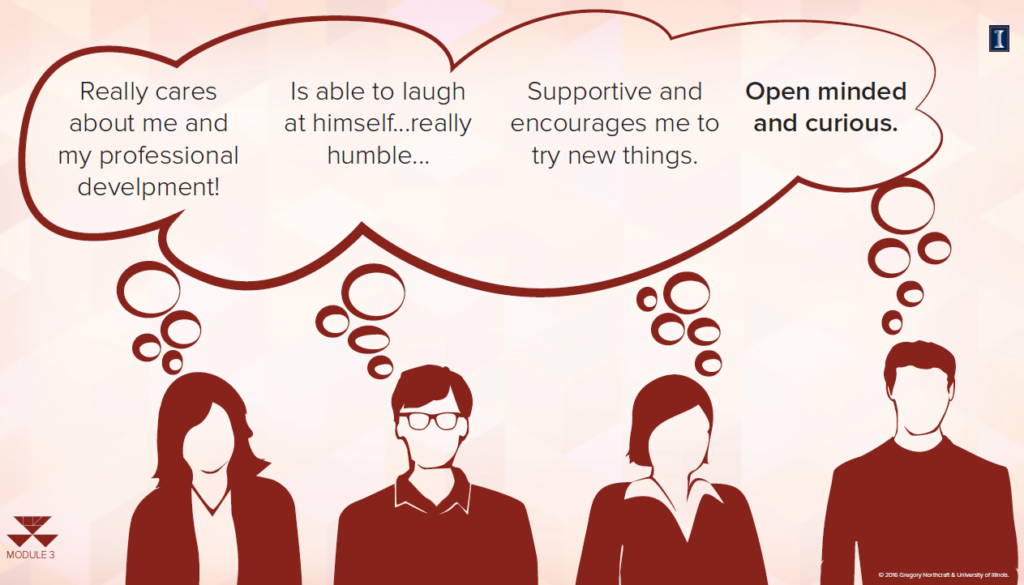This is the second blog post about the MOOC ‘Applications of Everyday Leadership‘ delivered by the University of Illinois at Urbana-Champaign. Topic is ‘Conflict Management’.
You can also read my notes about the first part of this MOOC: ‘Negotiation‘.
Concepts of Conflict Management
I) Intervening in a Conflict
A) Conflict management
Negotiation provides an obvious set of skills, strategies, and tactics for dealing with conflicts we are involved in.
Negotiation also provides a framework for understanding how to intervene in conflicts around us we are not involved in (third party) -But which we need to have resolved in order to do our job effectively!
Some additional skills, strategies, tactics required!
B) What is a third party?
Someone who is not a principal to the dispute (neutral/objective)
Third-parties enhance process:
- Control emotions
- Facilitate information sharing
- Provide objectivity (detached) perspective
- Facilitate creativity (another perspective)
- In some cases can force a decision
Used to enhance outcomes
C) Goals of intervening in a conflict
Effectiveness
-How well does the outcome address the disputants’ underlying interests?
-Solving the problem
Disputant commitment
– Can the outcome be successfully implemented?
-“The quality of a decision is always limited by your ability to implement it” (agency)
Efficiency
– How quickly is the dispute settled?
II) Types of Third Parties
A) Types of Third Parties
Arbitrator
-controls outcome (decider)
Mediator
-controls process (facilitator)
-but disputants make decision!
Can a manager have the best of both?
B) Arbitration
The authority to make a decision
-At the cost of effectiveness, commitment?
Real benefit comes from the threat of taking away control of the decision from the disputants
-Gives the disputants a superordinate goal of retaining control of the decision
rather than leaving it in the hands of the arbitrator
The art of “polite threats”
– “Just how bad is your BATNA?” (Best Alternative To a Negotiated Agreement)
III) Perceived Justice
A) What matters is perceived justice (fairness)
Distributive justice (something like a win for both?)
-Relating to the outcome (balance?)
Procedural justice (even-handedness, equal opportunity?)
-Relating to the decision rule, or more generally the process of deciding
-“Voice” (day-in-court) is big here
–Consistency (in applying rules) also key
Interactive justice
-Personal treatment (e.g., respect)
B) What makes disputes difficult?
Stakes (how important is this issue?)
-Larger = more competitive/defensive
Principles (positions vs. interests!)
-No room to negotiate!
Precedents
-Not just now but forever!
Symbols
-Not just what it is – also what it means
C) Enacting symbolism
Suppose a student would like to appeal a recent grade: the Professor’s willingness to change grades is symbolic (to this student) of fair treatment.
The Professor does not want to change the grade, but what will symbolize fairness to this student?
- Provide the class with examples of past, best answers
- Work with this students during office hours on writing skills
- Offer for a different Professor to re-grade the exam
- Any option which is more symbolic of fairness to the student will suffice
D) Summary points
As a manager, intervening in a conflict is about the choice between arbitrating and mediating
You should always rather mediate -Disputants know their interests best & ownership of the solution = commitment at implementation
But you need to insure closure! (efficiency) -Mediation does not…
Having a process strategy is key to mediating successfully:
- Identify a superordinate goal to manage the tone of the conflict
- Project fairness to be taken seriously as a neutral third party
- The polite threat of arbitration can motivate mediation effectiveness
- Keep the positions/interests distinction in mind
IV) Emotional Intelligence
Emotional Intelligence accounted for almost 90% of the difference between the best and the rest.
Emotional Intelligence consists of four clusters:
1. Self-Awareness
2. Self-Management
=> they compose the Personal Competencies
3. Social Awareness
4. Relationship Management
=> they compose the Social Competencies
Self-awareness: the foundation of Emotional Intelligence
- Understanding one’s own emotions and others
- Realistically assess strengths and weaknesses
- Humble
Self-regulation: thinking before acting
- Manage impulses
- Able to suspend judgement
- Flexible and adapt to change
- Positive outlook – see opportunities rather than problems
Social awareness: empathy
- Understand the needs of others
- Read non-verbal cues
- Take another person’s perspective
Relationship management: attuning to others
- Connect with other people
- Balance task focus with relationship management
- Collaborative and cooperative
Emotional Intelligence means having this mindset:
What you can do to improve your Emotional Intelligence:
- Assess your EI competence
- Leadership coaching
- Mindfulness-based emotional intelligence training
The essence of Emotional Intelligence:
- Understanding Yourself
- Managing Yourself
- Understanding Others
- Managing Relationships
Technical Knowledge and functional competence are vitally important. But … Emotional Intelligence, the capacity to fully engage oneself and others to move the business forward, is the differentiating factor between great and average executives.

